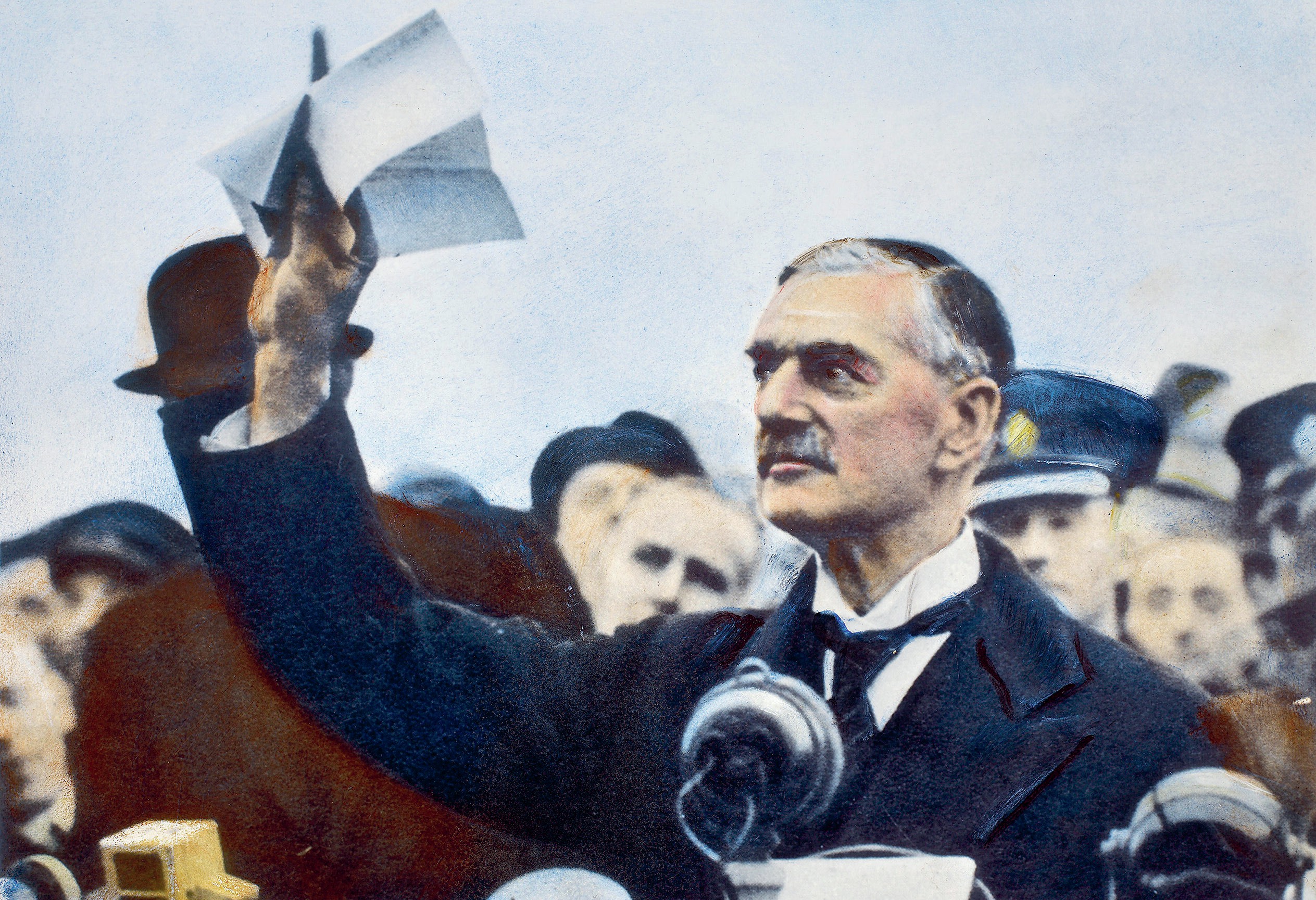
In September 1938, British prime minister Neville Chamberlain returned from a diplomatic summit that he hoped could secure peace in Europe. Leaders from Britain, France, Italy and Germany gathered in Munich to discuss the accelerating crisis while people across Europe waited anxiously for news. The main outcome of the conference was the acceptance of German demands for the annexation of the Sudetenland (an area in Czechoslovakia with a large German population).
The Munich Agreement was presented as a huge success in Germany, expanding its borders, increasing industrial capacity and demonstrating the willingness of European powers to cede to German demands. Despite this, when Chamberlain returned to Britain he famously heralded the agreement. As he held up a folded piece of paper, he told anxious crowds that it bore both his and Hitler’s names, and quoted it as saying: ‘We regard the agreement signed last night and the Anglo-German Naval Agreement as symbolic of the desire of our two peoples never to go to war with one another again’.
Your organisation does not have access to this article.
Sign up today to give your students the edge they need to achieve their best grades with subject expertise
Subscribe




